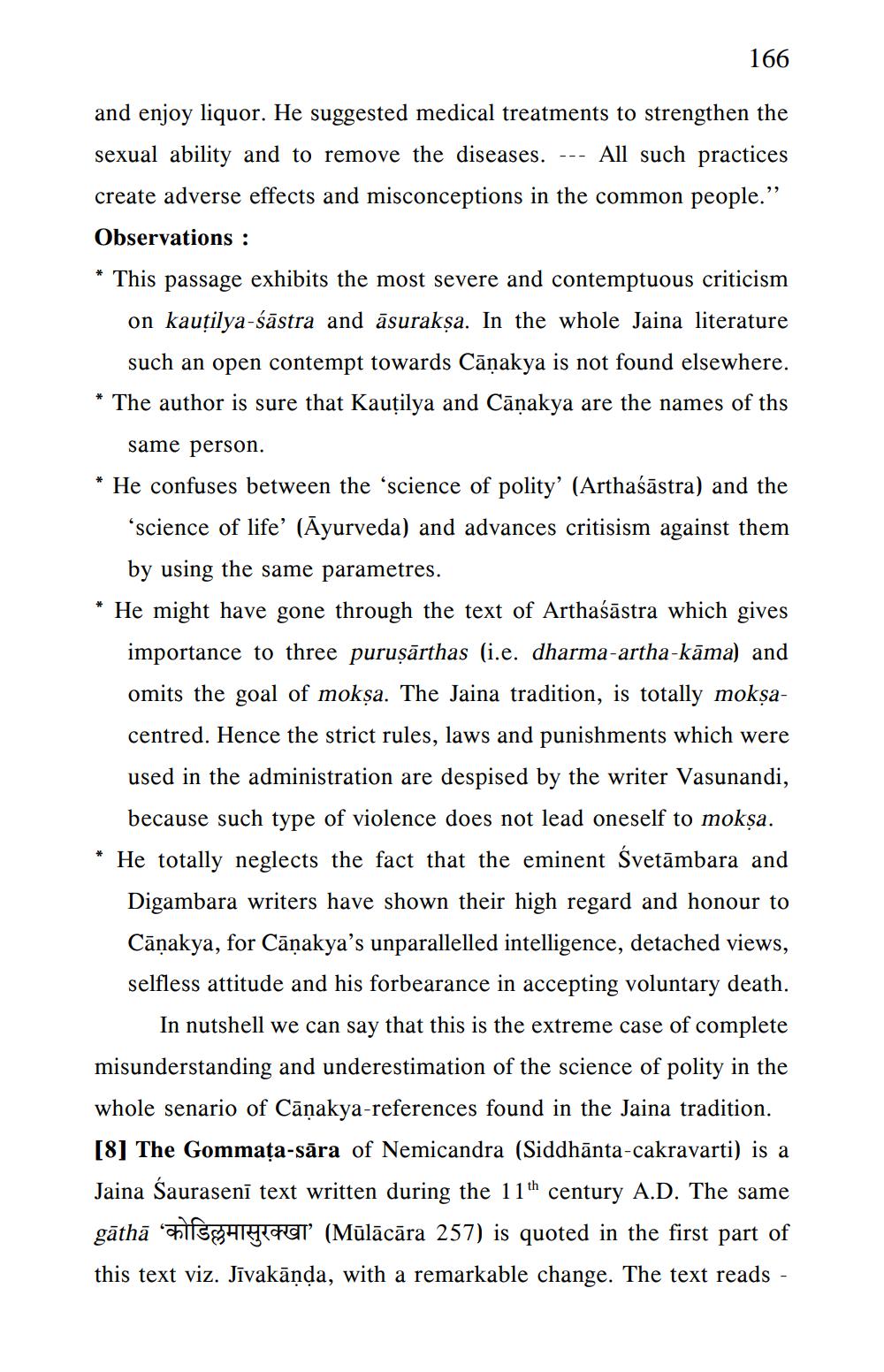________________
166
and enjoy liquor. He suggested medical treatments to strengthen the sexual ability and to remove the diseases. All such practices create adverse effects and misconceptions in the common people.” Observations :
This passage exhibits the most severe and contemptuous criticism on kauṭilya-śāstra and āsurakṣa. In the whole Jaina literature such an open contempt towards Caṇakya is not found elsewhere. * The author is sure that Kautilya and Caṇakya are the names of ths
same person.
He confuses between the 'science of polity' (Arthaśāstra) and the 'science of life' (Ayurveda) and advances critisism against them by using the same parametres.
* He might have gone through the text of Arthaśāstra which gives importance to three puruṣārthas (i.e. dharma-artha-kāma) and omits the goal of mokṣa. The Jaina tradition, is totally mokṣacentred. Hence the strict rules, laws and punishments which were used in the administration are despised by the writer Vasunandi, because such type of violence does not lead oneself to mokṣa. He totally neglects the fact that the eminent Svetambara and Digambara writers have shown their high regard and honour to Cāṇakya, for Cāṇakya's unparallelled intelligence, detached views, selfless attitude and his forbearance in accepting voluntary death.
In nutshell we can say that this is the extreme case of complete misunderstanding and underestimation of the science of polity in the whole senario of Caṇakya-references found in the Jaina tradition. [8] The Gommața-sāra of Nemicandra (Siddhānta-cakravarti) is a Jaina Śauraseni text written during the 11th century A.D. The same gāthā “g¶¶¶ (Mūlācāra 257) is quoted in the first part of this text viz. Jīvakāṇḍa, with a remarkable change. The text reads
*




